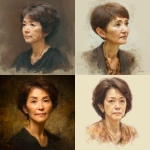Explore the Best AI Image Gallery

Blockchains Brushstrokes: Painting the Future of Finance in the Creative Industry
The intersection of finance and creativity has always been a fertile ground for innovation. While traditional systems have often proven cumbersome and opaque, emerging technologies like blockchain are poised to revolutionize how creatives manage their finances and connect with audiences. This blog post will explore the transformative impact of blockchain on the creative industry, examining its potential uses, ethical considerations, and future trends.
The Creative Economy in Flux
The creative economy is a dynamic force, encompassing diverse sectors such as music, art, publishing, film, and design. This sector relies heavily on intellectual property (IP) protection, secure transactions, and transparent revenue streams. However, traditional financial mechanisms often fall short of meeting these needs, leaving creatives vulnerable to exploitation and uncertainty.
Blockchain: A Canvas for Creative Finance
Blockchain technology, with its decentralized and immutable ledger system, offers a compelling solution to the challenges faced by the creative industry. Lets delve into some key use cases:
1. IP Protection and Rights Management
Blockchain enables creatives to register and track their IP rights securely and transparently. By recording ownership details on the blockchain, artists can prevent counterfeiting, ensure proper attribution, and streamline licensing agreements.
2. Micro-payments and Direct Fan Support
Blockchain facilitates micro-transactions, allowing fans to directly support their favorite creators through small, recurring payments. This empowers creatives to build sustainable revenue models independent of traditional gatekeepers like record labels or publishers.
3. Fractional Ownership and Collectibles
NFTs (Non-Fungible Tokens) built on blockchain technology allow for the fractional ownership of digital and physical assets. This opens up exciting possibilities for artists to tokenize their works, enabling fans to own a piece of their creative output.
Navigating the Ethical Landscape
While blockchain presents immense opportunities, its crucial to address the ethical considerations associated with its implementation:
1. Data Privacy and Security
Blockchain systems collect and store vast amounts of data. Ensuring robust security measures and protecting user privacy are paramount.
2. Accessibility and Inclusivity
Blockchain technology should be accessible to all creatives, regardless of their technical expertise or financial resources. Bridging the digital divide is essential for equitable participation.
3. Environmental Impact
Some blockchain networks consume significant energy. Exploring sustainable solutions and promoting eco-friendly practices within the creative sector are vital.
Future Trends: Blockchains Evolving Role
The intersection of blockchain and creativity is constantly evolving. Here are some emerging trends to watch:
1. Decentralized Autonomous Organizations (DAOs) for Creative Collaboration
DAOs can empower creatives to collaborate, share resources, and make collective decisions in a transparent and democratic manner.
2. Immersive Experiences Powered by Blockchain
Blockchain can enhance interactive art installations, virtual reality experiences, and other immersive forms of creative expression.
3. Tokenized Economies for Creative Communities
Blockchain-based tokens can foster vibrant online communities where creators and fans can interact, exchange value, and support each other.
Conclusion
Blockchain technology is poised to revolutionize the financial landscape of the creative industry, empowering artists, fostering transparency, and unlocking new avenues for collaboration and innovation. As this technology continues to evolve, it will be crucial to navigate its ethical implications responsibly and ensure that its benefits are accessible to all.









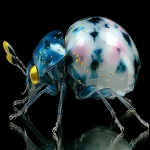

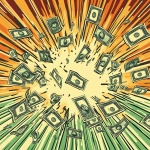

](https://images.ai-img.art/thumbnails/150/ea598427ecccd15dbcbfc78625cc896a4ed26e48570ff3ca588d600d6d1700e8.webp)
](https://images.ai-img.art/thumbnails/150/dd1955b446ab463b3fdcace04952178429caca34bd27b1754ac295551a7e1b69.webp)

](https://images.ai-img.art/thumbnails/150/ef7b358e095b26ff35b3d93894a5fbf65e74aeea8d8c86f7497d62d2ea02e79c.webp)


](https://images.ai-img.art/thumbnails/150/402b756d56ebe2b88a27bb515fb0841a0ec0ac8417b56a6798c11d012a23dacb.webp)
](https://images.ai-img.art/thumbnails/150/b26d89c5e8c8e3fb70a333120996f7edc4b76f34e46b9cf3b62b807b718e3dba.webp)


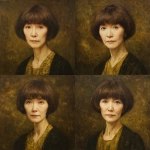






](https://images.ai-img.art/thumbnails/150/676bf1f674fc4fb4886c52a20baa395057fc0141107694f2d434e42e09609eeb.webp)

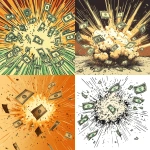



](https://images.ai-img.art/thumbnails/150/1120050ff5b82bfa0af0468dd3ab6ff8aef1eb98d7f2862a47a1cbad8c419eac.webp)


](https://images.ai-img.art/thumbnails/150/8629c6ac96a5ceef152572a59ee39e384c5c6c03439e8839a96e0224bebfe012.webp)



](https://images.ai-img.art/thumbnails/150/c6ff608defb681de3dafaea839e1497106053c83a34b3ef59c68eabcc4f25cc7.webp)



